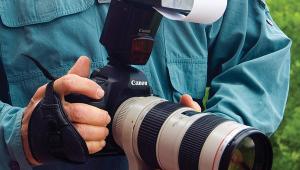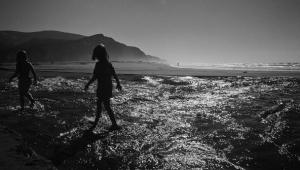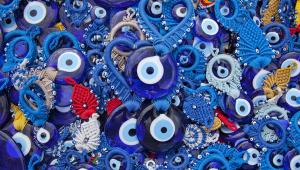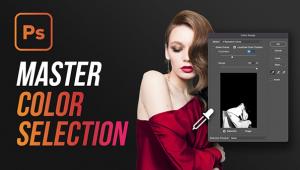Metering Systems
Metering Systems
Exposure Patterns
by George Schaub
The metering system in your camera is a highly sophisticated microprocessor that is constantly fed information from the light entering the lens, the lens itself (its aperture setting and even focal length) other settings you have made on the camera (such as your focusing point and distance, whether or not you have the flash off or on) and from your preferences in how you would like to have the light interpreted to get the image effects you desire. One of the ways you input your preferences to the camera is by making certain settings on your metering system. This includes the metering pattern (how it reads light) and the Metering mode (how it interprets and translates that light to aperture and shutter speed settings for you).
 |
|
|
Because the pupil of the camera (the lens opening) and the duration of exposure (the shutter speed) is fixed at the moment the image is recorded, one exposure has to handle the range of bright and dark in a scene. This is, as you can imagine, a delicate situation. In many cases you can rely on the fully automated exposure provided by what is called “patterned,” “Matrix,” “ESP,” or “Evaluative” exposure pattern. These are highly sophisticated systems. In other cases you will have to have more input into the calculations and use either center-weighted averaging or spot metering patterns to deliver the best exposure possible. Knowing when to use these optional user-controlled patterns and when to rely on an automated “pattern” setup is very helpful in getting great exposures every time.
 |
Complex exposures such as this twilight carnival scene can be a challenge, but knowing which metering pattern to choose for different lighting situations can help improve results dramatically. This photo was made with a patterned exposure on Program Exposure mode with the built-in flash turned on. This provided an excellent balance of ambient light and flash illumination.
This scene shows the range of values we want to record from a scene, from the deep blacks of the shadows to the bright white of the post in the center. Although the exposure system in your camera is quite sophisticated you too have to do your part. In essence, the information you “feed” the brain of the microcomputer is the information it acts upon. This exposure was made using Center-weighted averaging and Aperture-Priority mode. The exposure was read by pointing the camera slightly toward the upper right, exposure was locked using the AEL button (Auto Exposure Lock button) and then the scene was recomposed.
 |
This might seem quite confusing in the abstract, but working with the camera and making readings exclusively from certain brightness values in the scene, and observing results, will quickly show you how this system works. In fact, you can even make use of this knowledge to create very expressive exposures.
Despite what the ads might claim a meter is an instrument that does not have a mind of its own. It will behave rather well when you feed it the right information for its calculations. It will behave rather poorly if you don’t.
 |
Matrix or Evaluative or Pattern (or whatever the brand name might be for your camera) takes light readings from numerous areas around the frame, calculates these various brightness values, adds in other information such as lens focal length, then refers the calculation to a reference table in its memory and comes up with an exposure solution to the light “problem.” This is all microprocessor controlled and relies on items such as look-up tables and thousands of stored exposure combinations. In other words, if area X has a certain light value and area Y another, both within the frame, the system refers this to a look-up table and brings back an exposure setting.
Your camera’s “multi-pattern” metering system will deliver right-on exposures 80 percent of the time. It will generally deliver excellent exposures when the light is coming from behind you and falling onto the subject. All you need do then is use multi-pattern metering, pick the aperture or shutter speed that matches the image effect you want, aim the camera and frame the scene and you’re in business. This photo was made with an exposure of f/16 at 1/125 sec with the camera set at ISO 200.
 |
While this pattern is popular and easy to use it does not solve every lighting situation. In addition, those who enjoy having more control over their work will opt to use the other two patterns, which when used correctly offer finer exposure control that’s in your hands, not the computer “brain” of the camera.
I am continually impressed with the amazing ability of multi-pattern metering to capture difficult lighting situations. This is a fairly complex scene, lighting wise, and I made this exposure to specifically test the meter’s acumen. Note the complex pattern of highlight and shadow. In the past I might have read the bright white highlight and applied a +1 exposure compensation, then bracketed just to be sure. For this test I set the camera on Program Exposure mode and a multi-pattern (here Canon’s Evaluative) metering and just framed and shot. The exposure system nailed it, with texture in the highlight and information in the shadows. Very impressive stuff!
 |
Center-Weighted Averaging is a bit more “old fashioned” in that it is how light was read, for the most part, before advanced microprocessors got into the mix. The light is read from all parts of the viewfinder, with 70 percent of the light reading coming from the center of the frame and the remaining 30 percent of the calculation from the edges of the frame. It is called “averaging” because it takes in all the various brightness levels and then averages them to what is called a “middle gray” exposure reading.
For the most hands-on control try center-weighted or spot patterns. For this portrait I used center-weighted averaging. I placed the center area of the finder over the highlight side of Emma’s face, including some of the shadow area as well. I then locked the reading and recomposed for the balance of light and dark you see here.
 |
The key to using Center-Weighted Averaging patterns (CWA) is to understand how the meter is interpreting and gathering light information so that you may point the camera at the correct area within the frame to make the reading. In most cases you will want to control overexposure, so you should always include the brighter areas within the frame when you make readings. You needn’t go right up to or zoom into the bright area when making an exposure reading, but you should be sure to include that bright area toward the center of the frame.
This is called “biasing toward the highlight” and was and is common practice among slide film photographers. The key to using CWA is either working in Manual Exposure mode and setting the readings by “nulling out” the meter (making the exposure mark in the viewfinder sit in the center of the +/- exposure graph) or by making a reading and then locking that reading using AEL (Automatic Exposure Lock button) when shooting in an Auto Exposure mode such as aperture- or shutter-priority.
 |
Center-weighted is the pattern to reach for when heavy shadows fall and both shadow and bright highlight inhabit the frame. For this photo on Jackson Square in New Orleans I made the reading
by centering the frame on the painting, locking exposure and then reframing a bit. Note that center-weighted does not exclude shadow areas from the reading, but does use the brighter areas as centers of the reading space.
Most of the time CWA is best used when the light is contrasty (deep shadows), when the subject falls within its own shadow (backlighting) or when highly directional (coming from the sides) bright light has a profound influence on the scene. If the sun is coming over your shoulder or from the side behind you onto the subject then evaluative will work fine.
Spot Reading: The third metering pattern is selective spot, also known as “spot” metering. This works on the same principal as center-weighted (turning whatever it reads to a middle gray) except that it takes the reading from a specific and not a general area within the frame. That area can be a small circular spot at the very center of the viewfinder (in some cameras, you can control the diameter of that spot from quite small to moderately large) or from a specific focusing target that you select. With spot reading you often have to compensate exposure somewhat, but many times, if the area is not bright white but bright color, you can use it as the final exposure.
The easiest way to saturate the colors in this scene, and to ensure a deep shadow, is to spot read the bright yellow and lock the exposure. A patterned exposure would have tried to open the shadows too much, completely voiding the effect.
 |
The light right before sunset lit this building in Bamberg, Germany. The easiest way to expose and not lose the effect was to “spot” the bright area and lock the exposure. An easy way to do that is to work in Manual Exposure mode.
When there are “specks” of strong highlights among deep shadows the easiest way to read them to control highlights is to spot them without compensation. This is surely a subjective exposure, but it is the exact intention of the rendition of this scene.
Choosing And Using Metering Patterns
In general, choose patterns using these rules of thumb:
Matrix: (patterned) When the light comes from over your shoulder onto the scene. When contrast is not excessive (very deep shadows) and when there is a fairly even distribution of light and dark throughout the scene.
Center-Weighted: (When used in conjunction with exposure lock); highly directional light; bright light that dominates a portion of the frame, but is not necessarily the main subject (such as landscape with bright sky and darker ground); to control bright highlights that do not dominate the scene but that have a profound influence on exposure. When scene contrast is high.
Spot: When the main subject falls within its own shadow; when you want to control and saturate highlights. When scene contrast is high. When you want to saturate a specific area within the frame.
- Log in or register to post comments












































